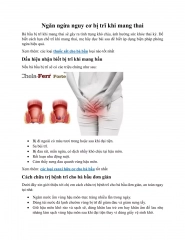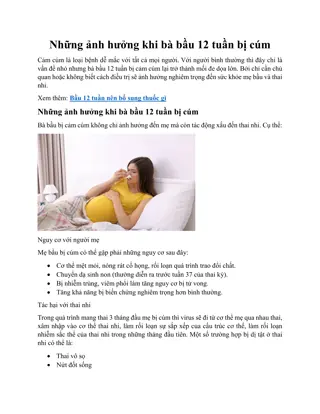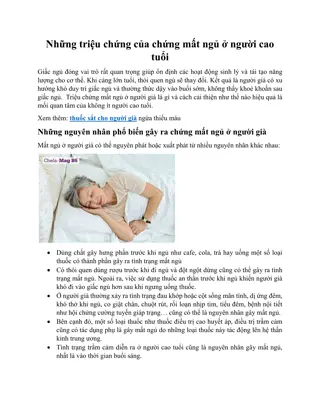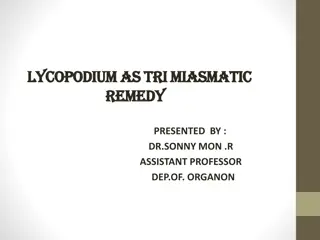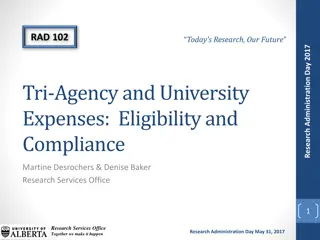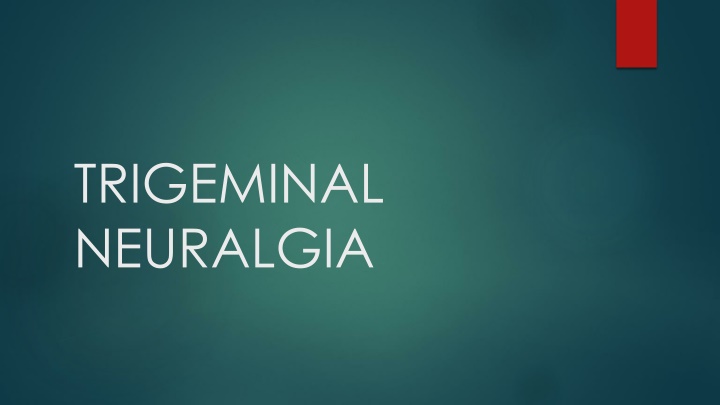
Trigeminal Neuralgia: Symptoms, Diagnosis, and Causes
Trigeminal neuralgia is a chronic neuropathic pain disorder characterized by sudden, intense electric shock-like or stabbing pain in the face. Learn about its clinical characteristics, diagnosis criteria, affected regions, and causes. Explore the types of trigeminal neuralgia and how neurological diseases can contribute to this condition.
Download Presentation

Please find below an Image/Link to download the presentation.
The content on the website is provided AS IS for your information and personal use only. It may not be sold, licensed, or shared on other websites without obtaining consent from the author. If you encounter any issues during the download, it is possible that the publisher has removed the file from their server.
You are allowed to download the files provided on this website for personal or commercial use, subject to the condition that they are used lawfully. All files are the property of their respective owners.
The content on the website is provided AS IS for your information and personal use only. It may not be sold, licensed, or shared on other websites without obtaining consent from the author.
E N D
Presentation Transcript
TRIGEMINAL NEURALGIA
chronic neuropathic pain disorder characterized by spontaneous and elicited paroxysms of electric shock like or stabbing pain in a region of the face suicide in severe cases have been attributed to the disorder.
Clinical Characteristics and Diagnosis diagnosis is clinical and is based on three main criteria: pain restricted to the territory of one or more divisions of the trigeminal nerve; paroxysms of pain that are sudden, intense, and very short (seconds minutes ) and are described as a shock or an electric sensation ; and pain triggered by innocuous stimuli on the face Triggered paroxysmal pain can be considered as pathognomonic of trigeminal neuralgia
pain of trigeminal neuralgia frequently affects the distribution of the maxillary or mandibular division of the trigeminal nerve, with the right side of the face affected more often than the left side incidence of trigeminal neuralgia is higher among women posterior third of the scalp, the outer ear (with the exception of the tragus), and the skin overlying the angle of the mandible are not innervated by the trigeminal nerve and are not sites of pain due to trigeminal neuralgia
location of the pain is not always concordant with the site of a sensory trigger. Examination for trigeminal neuralgia includes observation of the face while the patient is seated and remains completely still Less often, during a attack, forceful contraction of the facial muscles, called tic convulsif, may occur
Types and Causes Three types of trigeminal neuralgia ;classical, secondary, and idiopathic classical type, which is the most common, is caused by intracranial vascular compression of the trigeminal nerve root responsible vessel is usually -superior cerebellar artery Secondary trigeminal neuralgia, which is approximately 15% of cases, is attributable to an identifiable neurologic disease such as multiple sclerosis or a tumor in the cerebellopontine angle
Idiopathic trigeminal neuralgia accounts for approximately 10% of cases. secondary trigeminal neuralgia patients are usually younger, more likely to have sensory loss on a portion of the face, and are more likely to have bilateral pain magnetic resonance imaging (MRI) with gadolinium to rule out multiple sclerosis and cerebellopontine masses is advisable at the time of the initial diagnosis
Neurovascular Compression in Classical Trigeminal Neuralgia pathophysiology -compression of the sensory portion of the trigeminal nerve, close to its root entry zone in the pons, by a small branch of the basilar artery, most often - superior cerebellar artery characteristic finding at operation is a small, tortuous artery or arterial loop impinging on the medial aspect of the trigeminal root at its entry zone, causing lateral dislocation, distortion, flattening, or atrophy of the trigeminal root
Imaging techniques include 3DT2-weighted MRI sequences with detailed examination of the cisternal and cavernous segments of the nerve, 3D time-of-flight MR angiography for visualization of arteries, and phase-contrast MRI to display veins Vascular decompression may reverse these abnormalities at the trigeminal root entry zone, where the sensory portion of the nerve enters the ventral pons
Pathophysiology Entry into the pons, the trigeminal nerve loses its Schwann cell myelin sheath, which is replaced by central myelin generated by oligodendroglia zone of transition is vulnerable to damage and particularly to demyelination Vascular compression is the usual cause of demyelination at the site just before the nerve enters the pons, and multiple sclerosis is the typical cause at the site just after entry into the pons Demyelination at these sites has been shown in neurophysiological, neuroimaging, and histologic studies.
myelin sheath becomes thin enough to allow the transmembrane passage of ions in the underlying axon, the axon is not equipped to promptly pump out sodium resulting depolarization makes the axon hyperexcitable, causing ectopic generation of impulses with highfrequency afterdischarges and cross-talk between fibers (called ephaptic transmission) nerve fibers most involved in demyelination are the A- fibers high-frequency discharges originating at the site of demyelination along the A- primary afferents are redirected by brain-stem neurons to be perceived as paroxysmal pain
Trigeminal Neuralgia with Continuous Pain 24 to 49% of patients report continuous or long-lasting pain between paroxysmal attacks fluctuating pain, with a distribution that is consistent with that of the paroxysmal pain, is described as burning, throbbing, or aching. Trigeminal neuralgia characterized by this symptom, regardless of the cause, was previously classified as trigeminal neuralgia type 2 or atypical trigeminal neuralgia and is now classified as trigeminal neuralgia with concomitant continuous pain Progressive damage of the nerve root and central sensitization mechanisms have been hypothesized as mechanism of pain
Burning, throbbing, or aching pain is probably mediated by impairment of C fibers Loss of C fibers in the trigeminal sensory root may cause abnormal spontaneous activity in second-order neurons in the brain stem as a result of denervation supersensitivity of exposed postsynaptic membranes to neurotransmitters
Secondary Trigeminal Neuralgia 15% of patients with typical pain attacks - multiple sclerosis or by benign tumors in the cerebellopontine angle prevalence of 2 to 5% among patients with multiple sclerosis Multiple sclerosis related trigeminal neuralgia has been attributed to a demyelinating plaque in the fascicle of the trigeminal nerve as it courses through the ventral pons age at the onset of multiple sclerosis is higher for these patients than for those who do not have trigeminal neuralgia Pharmacologic treatment of the pain of trigeminal neuralgia in patients with multiple sclerosis is challenging because of side effects of medications, worsening of symptoms of multiple sclerosis such as fatigue and ataxia, and limited evidence of its effectiveness
Tumors acoustic neuroma , meningiomas, epidermoid cysts, and cholesteatomas analysis of data from four studies that included 243 patients with trigeminal neuralgia, tumors were the cause in 20 patients (8%) Infiltrative malignant tumors can also cause axonal degeneration, resulting in hypoesthesia in regions of the face and persistent pain Trigeminal neuropathies due to trauma and rheumatologic diseases such as SLE and scleroderma can be manifested as paroxysmal pain mimicking trigeminal neuralgia, but these associations are infrequent
Trigeminal neuropathy here start with unilateral paroxysmal pain, but bilateral sensory loss soon develops over regions of the face with ongoing pain, a disorder often termed trigeminal neuritis Facial trauma, dental procedures, or maxillofacial surgery may damage trigeminal nerve branches, causing paroxysmal stabbing, electric shock like, or burning pain pain attacks have a longer duration than trigeminal neuralgia paroxysms, and most patients also describe severe ongoing pain without sensory trigger zones Trigeminal reflex testing has been used as a neurophysiological technique to detect trigeminal nerve damage
Treatment Medical Treatment Carbamazepine- doses 200 to 1200 mg per day, oxcarbazepine 300 to 1800 mg per day have been considered the first-choice treatments treatment effect is proposed to be related to blockade of voltage-gated sodium channels, resulting in stabilization of hyperexcited neuronal membranes and inhibition of repetitive firing side effects, including dizziness, diplopia, ataxia, and elevated aminotransferase levels
Oxcarbazepine , fewer side effects and a low drugdrug interaction than carbamazepine, but has excessive central nervous system depression or dose-related hyponatremia Gabapentin, pregabalin which are tried for neuropathic conditions characterized by continuous pain, may be tried course of medical treatment is ineffective or associated with unacceptable side effects, surgical decompression of the trigeminal nerve may be considered
OTHER DRUGS Lamotrigine Baclofen 40- 80 mg SEVERE PAIN RESCUE THERAPY Lidocaine inj Sumatriptan sc inj Botox A inj can also be tried
Local Surgical Procedures surgical procedures are effective in reducing the severity and frequency of attacks-only if standard doses of medications are not sufficient to control symptoms or if side effects prevent continued use peripheral blockade of trigeminal nerve branches at their emergence from the facial bones by neurectomy, alcohol injections, or induction of radiofrequency lesions or cryolesions---- not used nowadays produce an area of anesthesia on the face that corresponds to the distribution of the damaged nerve procedures often led to anesthesia dolorosa (intense pain in the area of sensory loss
percutaneously damage the trigeminal ganglion in Meckels cave or exiting branches of the ganglion at the base of the skull - -radiofrequency thermocoagulation, chemical destruction through injection of glycerol,mechanical compression through balloon inflation Radiofrequency thermocoagulation preferentially damages small- diameter pain fibers Balloon compression and glycerol injection preferentially damage large myelinated fibers Pain relief is immediate , 68% with balloon compression , 58% with radiofrequency thermocoagulation and 28% with glycerol rhizolysis .
Generating a lesion of the trigeminal root with a gamma knife is a more recently introduced procedure challenge correct identification of nerve to avoid damage to pons pain-relieving effect of gamma-knife stereotactic radiosurgery takes 6 to 8 weeks 33 to 56% report continued pain relief at 4 to 5 years
Microvascular Decompression surgical procedure that is now favored for most cases of trigeminal neuralgia neurosurgeon identifies the vessel that is compressing the trigeminal nerve root, moves it from under the nerve to over the nerve if necessary
typically inserts a small sponge to keep the pulsating artery separated from the nerve root In 11%of cases there is only mere contact and no compression -surgeon usually inserts the separating sponge anyway, even though the rate of failure is higher meta-analyses have suggested that microvascular decompression is the most efficacious surgical intervention for classical trigeminal neuralgia 2 years after procedure, 68 to 88% of patients have pain relief, and 61 to 80% have pain relief at 4 to 5 year.
Complcations of SX -Cerebrospinal fluid leaks in 2.0% , brain-stem infarctions or hematomas 0.6%, and meningitis in 0.4% ,Sensory loss in trigeminal nerve distribution on the face occurs in 2.9% of patients ipsilateral hearing loss In 1.8% insufficient evidence to support or refute the effectiveness of surgical management of trigeminal neuralgia in patients with multiple sclerosis
Conclusions extremely painful condition that can be difficult to diagnose and treat Carbamazepine and oxcarbazepine constitute the first-line medical treatment Neuroimaging useful for identifying the cause and for identifying patients with major neurologic diseases and patients in whom small branches of the basilar artery compress the proximal nerve application of standardized MRI criteria for identifying neurovascular compression may aid in selecting patients for microvascular decompression

